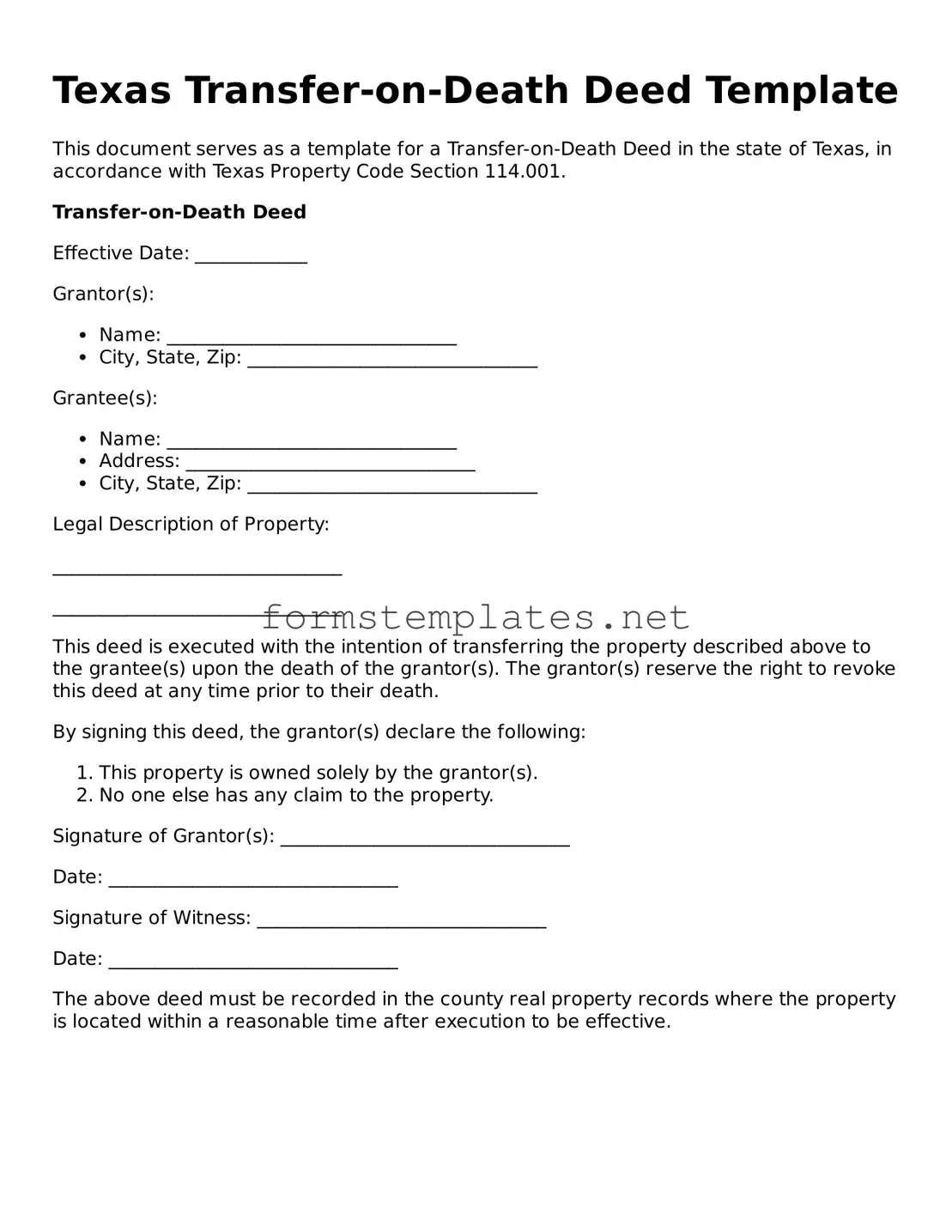Texas Transfer-on-Death Deed Template
This document serves as a template for a Transfer-on-Death Deed in the state of Texas, in accordance with Texas Property Code Section 114.001.
Transfer-on-Death Deed
Effective Date: ____________
Grantor(s):
- Name: _______________________________
- City, State, Zip: _______________________________
Grantee(s):
- Name: _______________________________
- Address: _______________________________
- City, State, Zip: _______________________________
Legal Description of Property:
_______________________________
_______________________________
This deed is executed with the intention of transferring the property described above to the grantee(s) upon the death of the grantor(s). The grantor(s) reserve the right to revoke this deed at any time prior to their death.
By signing this deed, the grantor(s) declare the following:
- This property is owned solely by the grantor(s).
- No one else has any claim to the property.
Signature of Grantor(s): _______________________________
Date: _______________________________
Signature of Witness: _______________________________
Date: _______________________________
The above deed must be recorded in the county real property records where the property is located within a reasonable time after execution to be effective.
